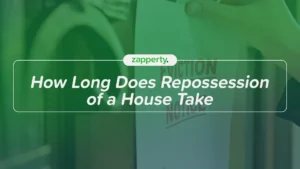Whenever you are buying or selling a property, it is increasingly important to ensure you can prove your identity. Property has been the subject of a number of nasty identity frauds and the industry is taking identity more seriously than ever before.
This is where ID1 and ID2 forms come in.
What are ID1 and ID2 forms?
ID1 and ID2 forms are used to prove your identity during property transactions in England and Wales. They are not part of the purchases themselves, but rather act as official certifications.
- ID1 Form: This form is designed for individual applicants, such as yourself if you’re buying a house as a private citizen. It captures your personal details and requires verification by an authorised person.
- ID2 Form: This form caters to corporate bodies like companies purchasing property. It gathers company information and needs verification of the individual representing the company’s authority.
Why is it so important to verify identity?
Property transactions involve significant sums of money, making it vital to prevent fraud. ID1 and ID2 forms play a key role in this process by ensuring the parties involved are who they claim to be. This helps protect everyone from scams and safeguards the integrity of the property market.
Who requires ID1 and ID2 forms?
Not everyone requires these forms. Here’s a breakdown:
- You Don’t Need Them: If you’re using a solicitor or conveyancer to handle your property transaction, they usually take care of the identity verification process. They are qualified professionals and can act as authorised persons to verify your ID1 form.
- When You Do Need Them: If you’re not using a solicitor or conveyancer, the responsibility falls on you to complete and have your ID1 form verified. Similarly, companies purchasing property would need to complete and have their ID2 form verified.
What about low value properties?
For properties valued at £6,000 or less, you may be exempt from completing ID1 or ID2 forms. Instead, a qualified valuer like an estate agent or surveyor can certify the property’s value. This exemption is designed to streamline the property transaction process for low-value properties. However, it’s important to note that if the property value exceeds this threshold, the standard ID1 or ID2 form will be required.
What is a Facility Letter?
Where can you get ID1 & ID2 forms from?
Both ID1 and ID2 forms can be downloaded for free from the UK government website.
How to Complete ID1 and ID2 forms
The forms themselves are pretty straightforward. They ask for basic information like your full name, date of birth, address, and nationality. You’ll also need to provide details of your photographic ID and proof of address documents.
Who can verify ID1 and ID2 forms? (Section B)
Once you’ve completed Section A of the form, you’ll need to find an authorised person to verify your identity by completing Section B. This can be:
- A solicitor or conveyancer (if you’re not already using one)
- A notary public
- A licensed conveyancer
- A barrister or chartered legal executive
- A member of the UK armed forces serving overseas (verified by a serving officer)
How much do ID1 and ID2 forms cost?
Here’s the good news: the ID1 and ID2 forms themselves are free to download. However, there is a fee associated with getting your identity verified by an authorised person. This fee varies depending on the chosen professional, but typically ranges from £25 to £50.
How long are ID1 and ID2 forms valid for?
Once completed and verified, ID1 and ID2 forms are valid for three months from the date of signature. This means if your property transaction takes longer than that timeframe, you’ll need to obtain a new verified form.
The Role of Legal Advisors in Completing and Certifying ID1 and ID2 Forms
Navigating property transactions can be complex, and ID1 and ID2 forms are an essential part of ensuring everything runs smoothly. Legal advisors play a pivotal role in managing these forms, offering expertise that simplifies the process while ensuring compliance with regulations like the Land Registration Rules 2003. Here’s why their involvement is so valuable and what they bring to the table.
Expertise in Completing ID1 and ID2 Forms
Legal advisors, such as solicitors or licensed conveyancers, are familiar with the intricacies of HM Land Registry requirements. They help ensure all details on the forms are accurate, from your identification documents to your address and property details.
For individual buyers or sellers (ID1 forms), they verify personal identification, while for corporate bodies (ID2 forms), they confirm the authority of representatives managing the transaction.
Their role ensures that the forms are error-free and align with legal standards, avoiding unnecessary delays or rejections.
Certification and Compliance
Certification is a critical step in the ID1 and ID2 form process, and legal advisors are authorised to perform this task under the Legal Services Act 2007. Once you’ve completed your section of the form, they verify your identity through official documentation, such as:
- A valid passport or driver’s license for photo ID
- Utility bills, bank statements, or council tax bills for proof of address
By certifying these documents, they guarantee compliance with land registration rules, ensuring the transaction adheres to all legal requirements. This step protects you and other parties from potential identity fraud during the property transaction.
Benefits of Using Legal Advisors
While you could seek verification from other authorised professionals, legal advisors provide unmatched value and expertise:
- Accuracy and Compliance: Their experience ensures forms meet the stringent standards of HM Land Registry.
- Fraud Prevention: Legal advisors safeguard your transaction by verifying identities thoroughly, reducing the risk of fraud.
- Time Efficiency: Their streamlined approach helps you avoid common pitfalls, ensuring a quicker, smoother process.
- Holistic Support: They don’t just certify your forms; they provide broader guidance throughout the transaction.
Additional Services Related to ID1 and ID2 Forms
Legal advisors don’t just handle the paperwork—they offer a comprehensive range of services to support you during the transaction:
- Identity Verification: Ensuring all parties involved are legitimate.
- Compliance Checks: Reviewing the transaction for adherence to property laws and HM Land Registry regulations.
- Advice on Property Ownership: Helping clarify legal questions related to the sale or purchase of the property.
- Dispute Resolution: If disputes arise over property ownership or related issues, they can mediate and resolve conflicts.
- Representation: Acting as your legal representative during the transaction, ensuring your best interests are protected.
When to Involve a Legal Advisor
If you’re not already working with a solicitor or conveyancer, engaging one for your ID1 or ID2 forms is highly recommended. Their role becomes especially important in complex situations, such as:
- Transactions involving multiple owners or companies
- High-value properties requiring strict compliance
- Scenarios where there’s a higher risk of disputes or fraud
Having a legal advisor by your side provides peace of mind and ensures that your property transaction proceeds smoothly.
Finally
To complete your property transaction, you’ll need to submit the ID1 and ID2 forms for identity verification. For the legal transfer of the ownership, don’t forget to review the TR1 form for the necessary details. While ID1 and ID2 forms are not a significant financial burden, they are an essential step in ensuring a smooth and secure property transaction. Understanding their purpose and how to obtain them will help you navigate the process efficiently when buying or selling a property in England and Wales.
Ensuring you have all your other documents needed to sell a house, as soon as you have your ID1 or ID2 forms in place and verified, you’ll be able to work with a company like Zapperty directly. We’ll be able to transact with you directly with all the identity verification in place – making the whole transaction quick and simple.




